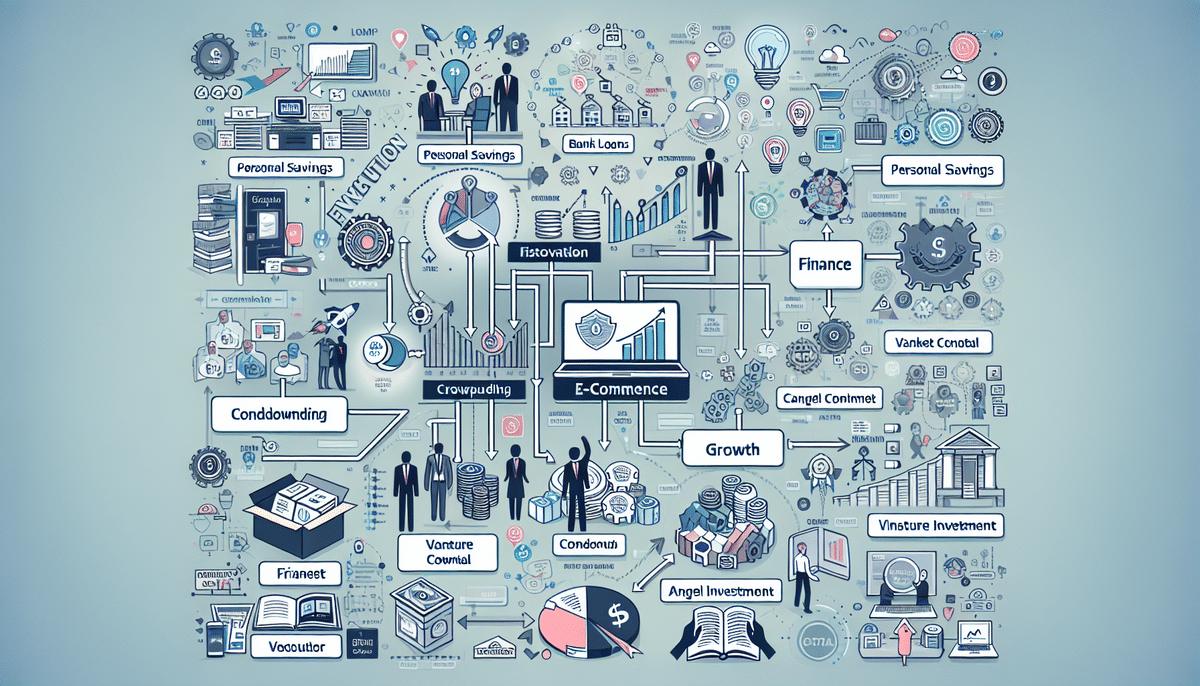Introduction to E-Commerce Business Loans
As an e-commerce business owner, continuously strategizing ways to enhance your online store is vital. Whether it involves expanding your product range, increasing your social media presence, or investing in more effective marketing campaigns, growth is crucial for your business's sustainability. However, scaling your operations often requires significant capital, which is where e-commerce business loans become essential. This comprehensive guide delves into the importance of e-commerce business loans, the various types available, qualifying criteria, and strategies to effectively utilize these funds for optimal business growth.
Why E-Commerce Business Loans are Essential for Growth
Access to capital is a cornerstone for expanding any business. E-commerce business loans provide the necessary funds to support various aspects of your online store, such as hiring additional staff, increasing inventory, or investing in advanced technology to streamline operations. Without adequate cash flow, achieving business objectives becomes challenging.
Moreover, these loans enable businesses to seize new market opportunities promptly. Whether it's adding a new product line or entering a new geographical market, having access to funds allows you to act swiftly and stay ahead of competitors. According to the Small Business Administration, businesses with access to financing are more likely to expand and create jobs.
Types of E-Commerce Business Loans
Traditional Bank Loans
Traditional bank loans are a common choice for e-commerce businesses with a strong credit history and a proven track record. These loans typically offer lower interest rates and longer repayment terms, making them cost-effective in the long run. However, the qualification process is stringent, often requiring extensive documentation and a lengthy approval period.
SBA Loans
SBA loans, backed by the Small Business Administration, are designed to help small businesses access necessary funding. They offer competitive interest rates and flexible repayment terms, making them an attractive option. However, the application process can be complex and time-consuming, often taking several weeks to months to secure funding.
Online Loans
Online lenders provide e-commerce businesses with faster access to capital compared to traditional banks. These loans are easier to qualify for and have a quicker approval process, although they may come with higher interest rates. Online loans are ideal for businesses that need immediate funding to capitalize on time-sensitive opportunities.
Pros and Cons of E-Commerce Business Loans
Advantages
- Quick Access to Capital: Loans provide immediate funds to achieve business goals faster.
- Flexibility: Loans offer more flexibility compared to equity financing, allowing you to use funds as needed.
- Credit Building: Timely repayments can help improve your business's credit score, facilitating easier access to future financing.
Disadvantages
- Repayment Obligations: Loans must be repaid with interest, which can strain your business's finances if not managed properly.
- Limited Cash Flow: Regular loan repayments can reduce the available cash for other business investments, potentially slowing growth.
- Risk of Default: Failure to meet repayment terms can lead to severe financial consequences, including damage to your credit rating.
Determining Your E-Commerce Business's Financial Needs
Before applying for a loan, it's essential to assess how much funding you require and its intended use. Start by evaluating your current financial situation and projecting future cash flow needs. Consider industry benchmarks and competitor performance to gauge your business's financial health.
Key factors to consider include:
- Inventory Costs: Assess the amount needed to maintain or expand your product offerings. For example, seasonal inventory spikes may require additional funding.
- Marketing and Advertising: Effective marketing campaigns, including social media advertising and email marketing, are crucial for driving sales and brand awareness.
- Technology Investments: Upgrading e-commerce platforms or integrating new technologies can enhance customer experience and operational efficiency.
Qualifying for an E-Commerce Business Loan
What Lenders Look For
Lenders evaluate several factors to determine loan eligibility, including:
- Credit Score: A higher credit score indicates reliability in repaying debts.
- Revenue and Profitability: Consistent revenue streams and profitability demonstrate business stability.
- Financial History: A solid financial history with transparent records reassures lenders of your financial management capabilities.
- Collateral: Offering collateral can secure the loan and potentially lower interest rates.
- Industry Stability: Businesses in stable and growing industries are viewed as lower risk compared to those in volatile sectors.
Tips for Qualifying
- Improve Your Credit Score: Pay off existing debts and maintain a high credit score to enhance loan eligibility.
- Prepare a Robust Business Plan: A detailed business plan outlining your growth strategy and financial projections can impress lenders.
- Maintain Accurate Financial Records: Organized and transparent financial statements facilitate the loan application process.
- Understand Your Financial Needs: Clearly define how much you need and how the funds will be utilized to present a strong case to lenders.
Common Mistakes to Avoid When Applying for a Loan
- Submitting Incomplete or Inaccurate Information: Ensure all application details are accurate and complete to prevent delays or rejections.
- Not Following Up: Maintain communication with lenders to stay informed about the application status and respond promptly to any requests.
- Failing to Understand Loan Terms: Carefully review all loan agreements to fully understand the repayment terms and obligations.
- Lacking a Clear Use of Funds: Present a well-defined plan for how the loan will support business growth, including specific goals and timelines.
Choosing the Right Loan: Comparing Interest Rates and Terms
When selecting an e-commerce business loan, it's crucial to compare interest rates and repayment terms from multiple lenders to secure the best deal. Consider factors such as:
- Interest Rates: Lower interest rates reduce the overall cost of the loan.
- Repayment Terms: Longer repayment periods can lower monthly payments but may increase total interest paid.
- Fees and Penalties: Be aware of any additional fees or penalties for early repayment or late payments.
Using comparison tools from reputable sources like NerdWallet or Bankrate can help you make informed decisions.
Maximizing Growth with Your E-Commerce Business Loan
Once you secure a loan, it's essential to utilize the funds strategically to maximize growth potential. Consider the following investment areas:
- Product Development: Innovate and expand your product offerings to meet customer demands and stay competitive.
- Marketing Campaigns: Invest in comprehensive marketing strategies, including SEO, PPC, and social media advertising, to increase brand visibility and drive sales.
- Technology Upgrades: Enhance your e-commerce platform with advanced features such as AI-driven recommendations or improved user interfaces to enhance customer experience.
- Team Expansion: Hiring skilled professionals can improve operational efficiency and support business growth.
Alternatives to Traditional E-Commerce Business Loans
While traditional loans are effective, exploring alternative financing options can provide additional flexibility:
- Crowdfunding: Platforms like Kickstarter and Indiegogo allow you to raise funds from a large number of people, often in exchange for rewards or pre-orders.
- Grants: Government and private organizations offer grants to support small businesses, which do not require repayment. SBA Grants are a notable option.
- Revenue-Based Financing: This option allows you to receive capital in exchange for a percentage of future revenue, providing flexibility in repayment based on your sales performance.
Conclusion: Making Informed Financing Decisions for Your E-Commerce Business
Securing the right financing is pivotal for fueling your e-commerce business's growth. By understanding the various types of business loans, recognizing the pros and cons, and knowing how to qualify, you can make informed decisions that align with your business goals. Additionally, exploring alternative financing options can provide additional avenues for capital. Remember, taking out a business loan is a strategic investment in your company's future, enabling you to achieve long-term success and sustainability.






















